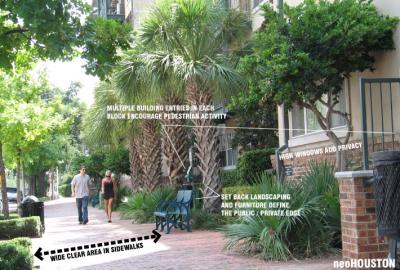
The Interface Effect: Good Urbanism Spreads


For those who remember my previous post on Property Value Theory, today I wanted to share a photographic comparison I made between two urban infill projects of similar age here in Houston.
Both projects were among the first major redevelopment projects in Midtown Houston, both are very similar in size, unit mix, and price range. However the two projects are completely different in design.
Post Midtown Square is a well designed, new urban, mixed-use infill project. At first glance Camden Midtown seems similar, however, on closer inspection it is really a suburban garden apartment complex dropped in across (and interrupting) three city blocks.
Since the two projects were developed a remarkable trend has become evident: Post has vibrant street-life, and Camden does not.
Post has sparked significant redevelopment activity in it's vicinity, and has become the focal piece of a vibrant neighborhood area.
Camden, on the other hand, has not seen significant redevelopment in its immediate surroundings.
The impacts on the surrounding properties is visualized in the attached map.
This is just one case study of how great interface is radiant; in other words, the value created by the good design spills over onto neighboring properties, and stimulates compatible (aka New Urban) redevelopment in its vicinity.
The more we can explain how this happens the more we can nail down a concrete financial motivation for cities to remove their old suburban-paradigm development codes and allow/promote New Urban development.
It's simple: good urbanism spreads, and improves a city's tax base. Poorly designed infill developments don't spread revitalization.
You can read the complete post with a lot more pictures comparing these two developments and one other at my blog, neoHOUSTON.
Thanks for reading, and please feel free to share your thoughts on this topic!


Comments
Write your comments in the box below and share on your Facebook!